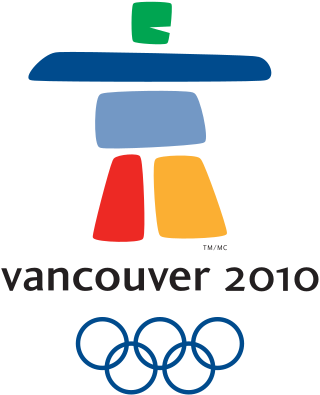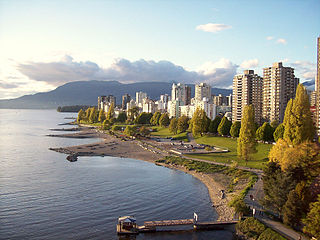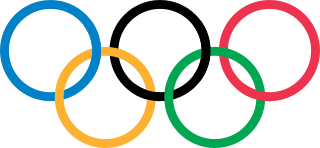
The 2010 Winter Olympics, officially known as the XXI Olympic Winter Games and also known as Vancouver 2010, were an international winter multi-sport event held from February 12 to 28, 2010 in Vancouver, British Columbia, Canada, with some events held in the surrounding suburbs of Richmond, West Vancouver and the University of British Columbia, and in the nearby resort town of Whistler. It was regarded by the Olympic Committee to be among the most successful Olympic games in history, in both attendance and coverage. Approximately 2,600 athletes from 82 nations participated in 86 events in fifteen disciplines. Both the Winter Olympic and Paralympic Games were organized by the Vancouver Organizing Committee (VANOC), headed by John Furlong. The 2010 Winter Games were the third Olympics to be hosted by Canada, and the first to be held within the province of British Columbia. Canada had previously hosted the 1976 Summer Olympics in Montreal, Quebec, and the 1988 Winter Olympics in Calgary, Alberta.

An inuksuk or inukshuk is a type of stone landmark or cairn built by, and for the use of, Inuit, Iñupiat, Kalaallit, Yupik, and other peoples of the Arctic region of North America. These structures are found in northern Canada, Greenland, and Alaska. This combined region, north of the Arctic Circle, is dominated by the tundra biome and has areas with few natural landmarks.

Cambridge Bay is a hamlet located on Victoria Island in the Kitikmeot Region of Nunavut, Canada. It is the largest settlement on Victoria Island. Cambridge Bay is named for Prince Adolphus, Duke of Cambridge, while the traditional Inuinnaqtun name for the area is Ikaluktutiak or Iqaluktuuttiaq meaning "good fishing place".

Canada Place is a building situated on the Burrard Inlet in Vancouver, British Columbia, Canada. It is home to the Vancouver Convention Centre, the Pan Pacific Vancouver Hotel, the Vancouver World Trade Centre, and the virtual flight ride FlyOver Canada. The building's exterior is covered by fabric roofs resembling sails. It is also the main cruise ship passenger terminal for the region, where cruises to Alaska originate. The building was designed by architects Zeidler Roberts Partnership in joint venture with Musson Cattell Mackey Partnership and DA Architects + Planners.

English Bay is an open bay northwest of the Burrard Peninsula in British Columbia, Canada, extending from the headland between Siwash Rock and Prospect Point on Vancouver's Downtown peninsula in the northeast, to the northwestern tip of Point Grey in the southwest. The bay encompasses the coasts of Stanley Park, the West End, Kitsilano, West Point Grey and the University Endowment Lands, and makes up the southeastern portion of the outer Burrard Inlet. There is a narrow inlet named False Creek at its eastern end.

Andrew George Jr. is a Canadian chef and writer.

Kugaaruk, formerly known as Pelly Bay until 3 December 1999, is located on the shore of Pelly Bay, just off the Gulf of Boothia, Simpson Peninsula, Kitikmeot, in Canada's Nunavut territory. Access is by air by the Kugaaruk Airport and by annual supply sealift. Kugaaruk means "little stream", the traditional name of the brook that flows through the hamlet.

The Chinese Garden of Friendship is a heritage-listed 1.03-hectare (3-acre) Chinese garden at 1 Harbour Street, in the Sydney Central Business District, City of Sydney, New South Wales, Australia. Modelled after the classic private gardens of the Ming dynasty, the garden offers an insight into Chinese heritage and culture. It was designed by Guangzhou Garden Planning & Building Design Institute, Tsang & Lee, and Edmond Bull & Corkery. It was built between 1986-1988 by Gutteridge Haskins & Davey, the Darling Harbour Authority, Imperial Gardens, Leightons, and Australian Native Landscapes. The gardens were added to the New South Wales State Heritage Register on 5 October 2018.

Each Olympic Games has its own Olympic emblem, which is a design integrating the Olympic rings with one or more distinctive elements. They are created and proposed by the Organising Committee of the Olympic Games (OCOG) or the National Olympic Committee (NOC) of the host country. It is the responsibility of the International Olympic Committee (IOC) to approve Olympic emblems for the Olympic games. The Olympic emblems are used in promotional materials, by sponsors of the Olympics, and on the uniforms of every Olympic competitor. All emblems are the property of the IOC.

Nunavut is the largest and northernmost territory of Canada. It was separated officially from the Northwest Territories on April 1, 1999, via the Nunavut Act and the Nunavut Land Claims Agreement Act, which provided this territory to the Inuit for independent government. The boundaries had been drawn in 1993. The creation of Nunavut resulted in the first major change to Canada's political map in half a century since the province of Newfoundland was admitted in 1949.

Kananginak Pootoogook was an Inuk sculptor and printmaker who lived in Cape Dorset, Nunavut, in Canada. He died as a result of complications related to surgery for lung cancer.

The 1986 World Exposition on Transportation and Communication, or simply Expo 86, was a World's Fair held in Vancouver, British Columbia, Canada from May 2 until October 13, 1986. The fair, the theme of which was "Transportation and Communication: World in Motion – World in Touch", coincided with Vancouver's centennial and was held on the north shore of False Creek.

Public art in Vancouver is an important aspect of the urban environment. Large portions of public art in the city – located in British Columbia, Canada – are funded by the provincial and federal government. Up to 1% of the budget of a building can go towards the construction of public art.
The following is an alphabetical list of topics related to Indigenous peoples in Canada, comprising the First Nations, Inuit and Métis peoples.
A number of concerns and controversies at the 2010 Winter Olympics in Vancouver, British Columbia, Canada, surfaced before and during the Games, and which received media coverage.

Gate to the Northwest Passage is a 1980 sculpture by Alan Chung Hung, located adjacent to the Vancouver Maritime Museum in Vanier Park in the Kitsilano neighborhood of Vancouver, British Columbia, Canada. The 4.6-metre (15 ft) sculpture of a square, cut and twisted "like a paper clip" to form an arch, is composed of weathered Corten steel that rusts to provide a protective layer. The work was installed in 1980 to commemorate the arrival of Captain George Vancouver in Burrard Inlet, following a competition sponsored by Parks Canada one year prior. Gate to the Northwest Passage received an adverse reaction initially, but reception has improved over time. The sculpture has been included in walking tours of the surrounding neighborhoods as a highlight of Vanier Park.
David Pisurayak Kootook, MSC, was an Inuit boy from Spence Bay, Northwest Territories who helped save the life of bush pilot Marten Hartwell after a crash in the Canadian Arctic. Kootook died after 23 days, and was posthumously awarded the Meritorious Service Cross.
2010 Winter Olympics marketing has been a long running campaign that began since Vancouver won its bid to host the games in 2003.
Celina Kalluk is an Inuit-Canadian artist. She creates and performs in several mediums, notably the tradition of Inuit throat singing. In addition to her work as a musician, Kalluk has also worked as an educator, and a children's author, publishing her debut work in 2014.















